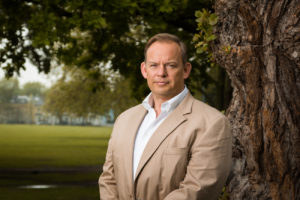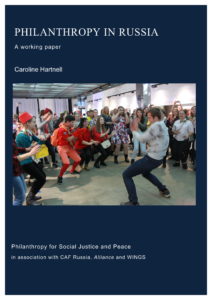 I come to PSJP’s working paper on Philanthropy in Russia two and a half years removed from direct engagement in the Russian philanthropic sector since the Mott Foundation halted grantmaking to organizations there. Reading the paper, published in January 2018, therefore helped me reacquaint myself with some of the actors, trends and challenges faced then, while also opening my eyes to new, or more fully realized, developments that have emerged since.
I come to PSJP’s working paper on Philanthropy in Russia two and a half years removed from direct engagement in the Russian philanthropic sector since the Mott Foundation halted grantmaking to organizations there. Reading the paper, published in January 2018, therefore helped me reacquaint myself with some of the actors, trends and challenges faced then, while also opening my eyes to new, or more fully realized, developments that have emerged since.
It is heartening to see that so much is still being done at ground level by volunteers, donors and professionals to improve the lives of their fellow citizens. Too often it is easy to overlook this growing ecosystem of philanthropy and civic engagement in the face of headline news about state action – and to be fair, this has often been for good reason.
I couldn’t help but read the paper with the idea that philanthropy, understood as the voluntary use of private resources for public good, while becoming much richer and more varied in Russia, is constrained by acceptable definitions of what constitutes the public good. Thus, while the concept of ‘socially oriented organization’ provides something of a seal of approval for organizations benefiting from philanthropic resources or state support, it also risks being a mark of exclusion for those working in fields outside that definition. 
A range of different types of giving
I think the taxonomy of giving types is very helpful and gives a vivid feel for the nuance that exists within the sector. It helped to me to understand the different roles these actors play in pursuing their objectives. The particular character of community foundation development was notable in the years when we supported it and seems even more pronounced now. I was very interested in the work around impact investing and social entrepreneurship as this was a field which felt very much in its infancy, but with great dynamic potential, two or three years ago. It is hard to tell how much that potential has been realized since the piece is largely reliant on the thoughts of a single interviewee, but it certainly gives the impression that this is an area in which people are looking for new organizational forms to help achieve specific goals.
I also found the analysis of the evolution of fundraising foundations compelling. The increasing engagement of these institutions in advocacy work around their areas of activity is a much welcomed development. It certainly feels like those organizations that have developed enormous expertise in their areas of activity should be pushing for systemic changes rather than simply filling gaps. One can only hope that successes in areas like palliative or hospice care can be replicated with other challenging social issues.
Disappointing limitations on philanthropic activity
Beyond the social sphere, the limitations on philanthropic activity remain disappointing, though it was encouraging to see the example of OVD-Info as a successful case of crowdfunding. We saw occasional examples of successful fundraising activity by organizations with a more explicit human rights orientation during our period of engagement, but these were sporadic and felt very much like an afterthought or a burden. We must no doubt accept considerable responsibility as donors for not encouraging partners to work more systematically on developing constituencies and associated donor bases. There was a much easier moment in which to pursue this, and now the challenge can only be dramatically more difficult. However, the examples of OVD-Info and FBK, specialized as they may be, should surely provide inspiration for like-minded organizations to pursue individual fundraising in a more methodical and widespread way. With the vast increase in individual middle-class giving noted in the paper, I hope some of these resources can be channelled to work aimed at preserving and promoting civic dignity.
Philanthropy infrastructure worth exploring further
I believe the paper could have delved further into the state of the philanthropic infrastructure since we devoted a lot of energy to it in Russia and other areas. While I am happy to see that CAF Russia and the Russian Donors Forum remain critical players, it might have been helpful to flesh out more about new actors, environments, or processes that are helping support and inform the sector. What are the key sources of information and research that philanthropic actors can draw on to help them make decisions? What kinds of sources of organizational or programmatic learning are there? How much is domestically sourced? Or, in contrast to the trend of blocking foreign financial flows, how much is philanthropic practice influenced or informed by international experience? More broadly, how much, if at all, is philanthropy in Russia connected to peers and trends globally? It feels like these constitute a related set of questions that might be worth exploring further.
A hope for the future
Overall, I found this to be a very useful starting point for refreshing my knowledge of the state of philanthropy in Russia and for drawing my attention to new developments. It is extremely encouraging to see that the growth in mass individual giving is a real phenomenon. It would be even more encouraging if we saw that growth having an impact across different realms of activity. It would be terribly unfortunate to see the growing distinction between acceptable and unacceptable organizations reflected in an entrenched, albeit implicit, exclusion of social justice organizations from the benefits of the voluntary use of private funds for public good.
Ross Maclaren is a program officer at the C S Mott Foundation.